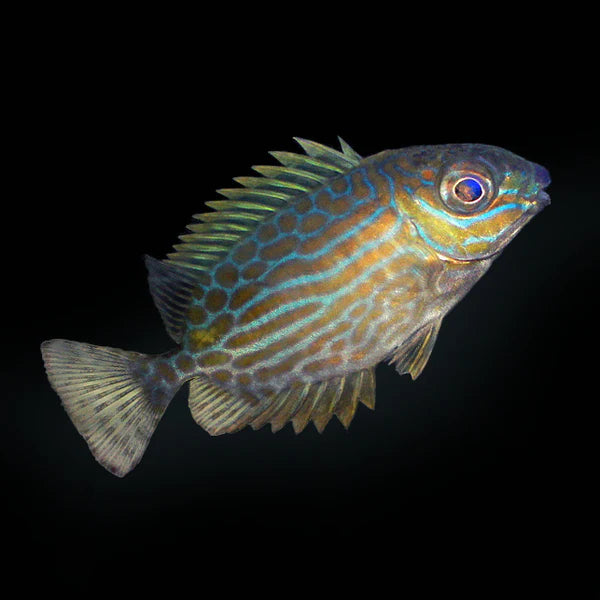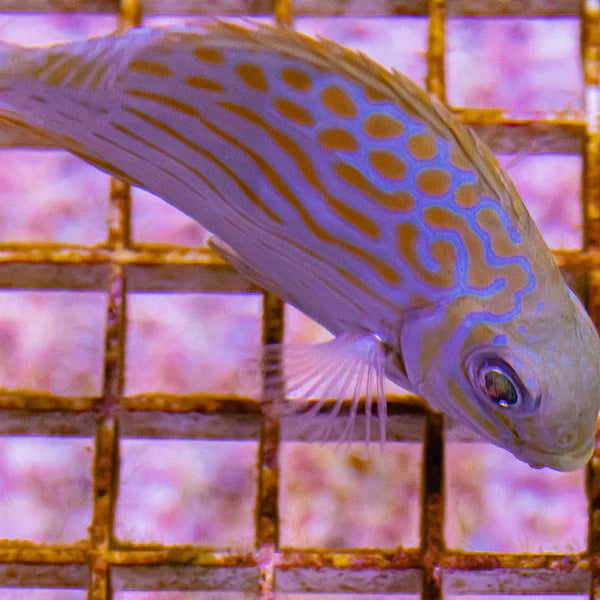Golden-lined Rabbitfish - Siganus lineatus - Biota Captive Bred
Golden-lined Rabbitfish - Siganus lineatus - Biota Captive Bred
Share
Golden-lined Rabbitfish - Siganus lineatus - Biota Captive Bred
Siganus lineatus - The Golden Lined Rabbitfish is a beautiful, interesting, and hard working algae eater for larger aquariums. They are ravenous herbivores that spend most of their time visibly swimming out in the open, grazing on nuisance algae.
They have a light blue body with metallic gold lines, dots, and dashes and a big bright lemon yellow blotch at the base of the tail. Rabbitfish may be added to a reef tank "with caution," but they may eat many coral species such as Xenia and fleshy LPS. Keeping them very well-fed can help to curb their appetite for coral. We recommend a mixed diet of commercial herbivore blends, frozen foods, nori, and Easy Reefs DKI pellets and Masstick.
These fish can grow large - more than a foot in length, but 9" is more typical. They are also very fast, active swimmers, so they should be housed in an aquarium of at least 120 gallons. Longer aquariums at least 6 feet in length are ideal for adult rabbitfish.
They are peaceful toward other fish, but may fight with similar species. They make great additions to both peaceful and predator tanks because their venomous spines deter predatory fish from eating them. Please use caution when handling rabbitfish and when cleaning the tank, as their sting can be painful.
While Rabbitfish are still found in Palau’s waters, the population has steadily declined in recent years. We restock Palauan waters with rabbitfish regularly, as they make nutritious meals for the Palauan people.
Biota cultures Rabbitfish in captivity, later releasing them into the local Palauan waterways once they’ve grown to a suitable size. This is part of our “giving back to the ocean” philosophy and helps to restore wild populations. To date, Biota has released 100,000+ Rabbitfish to the waters of Airai State, Palau. These are not just eggs or fry, these are fish that have been raised for several months through the most vulnerable part of their lives. This means they have a high chance of making it to adulthood.




